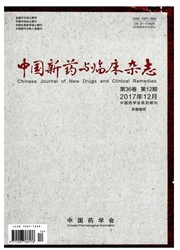

 中文摘要:
中文摘要:
树枝状聚合物(dendrimer)是一种新近发展起来的纳米级聚合物,具有树枝状的骨架和球状外形,树枝状分支的末端连接数目众多的活性官能团。药物既可以被包封在树枝状聚合物骨架内部的空腔,也可以化学偶联在树枝状聚合物表面的官能团上。表面的官能团还能同时连接多种对机体某些器官、组织和细胞有特异性相互作用的靶向配基,从而将包封的药物或者偶联的药物带到病变部位实现靶向治疗。同时,树枝状聚合物粒径很小,范围从GO代到G10代只有1~15nm,偶联药物之后也不会超过30nm.这样的粒径范围使得以树枝状聚合物为基础制备的纳米粒具有较强的高通透高滞留(enhanced permeability and retention, EPR)效应,从而对肿瘤组织实现被动靶向给药。本文旨在对树枝状聚合物的结构、性质及其在靶向给药系统中的应用作一简要综述。
 英文摘要:
英文摘要:
Dendrimer is a kind of newly developed polymer that possesses dendritic skeleton and spherical shape with terminal branches connecting with numerous functional groups. Drug molecules can be either encapsulated in the hydrophobic chambers inside the dendritic skelecton, or chemically conjugated to the functional groups on the surface of dendrimer. The surface functional groups can simultaneously be linked chemically to various ligands that have high affinity to specific organs, tissues or cells in the body, and thus lead the encapsulated or conjugated drugs to the diseased sites for targeted therapy. Dendrimer is characteristic of small diameter particle size (from GO to G10 is only 1-15 nm). Even after attachment with drug molecules, the resultant dendrimer-drug conjugates will be definitely less than 30 nm in size. This specific size range will provide the dendrimer-based conjugates or nanoparticles with strong enhanced permeability and retention effect (EPR effect), so as to achieve the passive tumor-targeted drug delivery. This review aims to provide a brief comprehension of the structures, properties and the application of dendrimer in the targeted drug delivery.
 同期刊论文项目
同期刊论文项目
 同项目期刊论文
同项目期刊论文
 期刊信息
期刊信息
